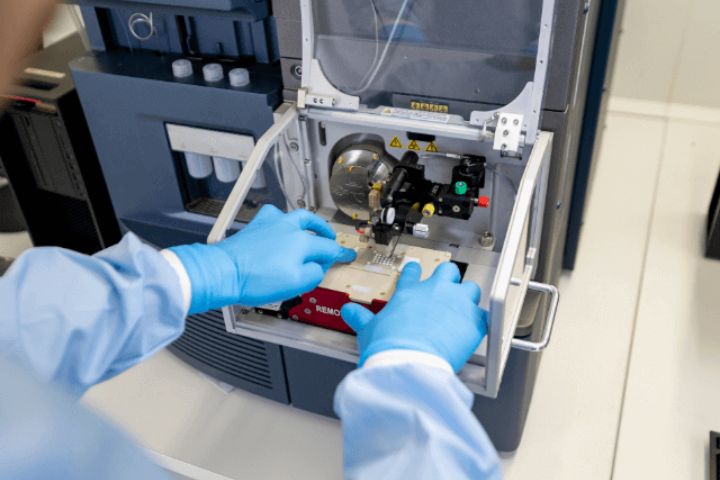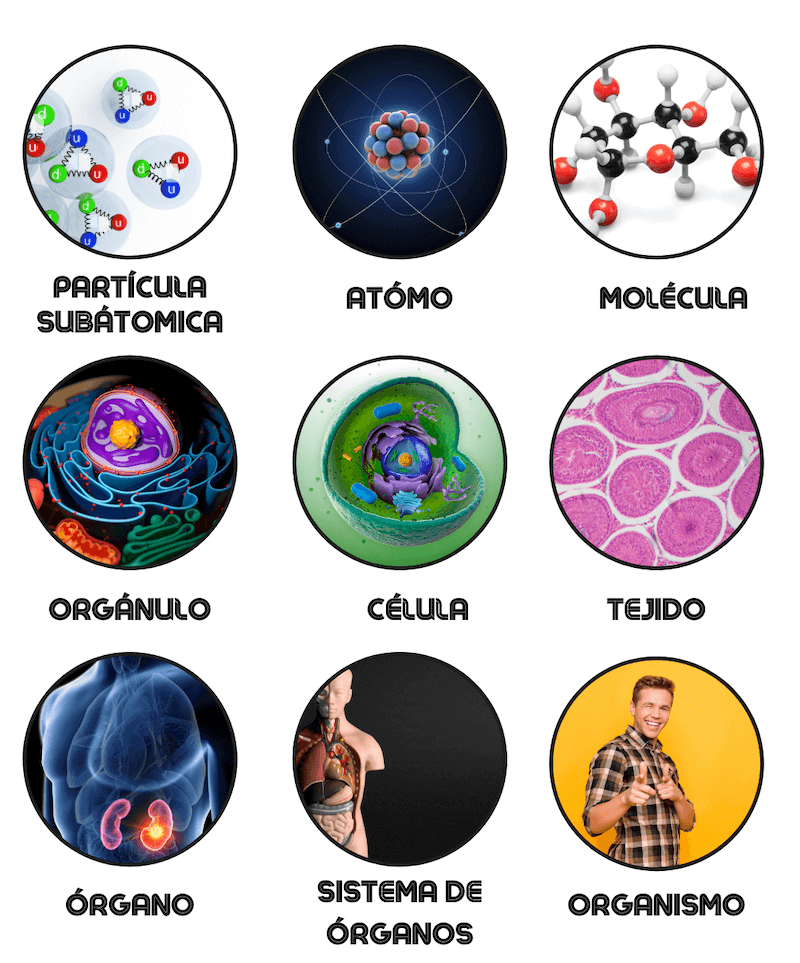Examples from biophysics

Biophysics is the science discipline that combines biology and physics to study living beings.
Biophysicists are professionals who must perfectly understand the relationship between biology and physics with the aim of understanding the biological and biochemical processes of organisms at a fundamental level.
Biochemistry and biophysics are areas that work in perfect combination. It is increasingly common to study the biochemical processes of cells through computational simulations using biophysical methods.
Other examples of the use of physics applied to biology are the generation of prostheses, study of the nervous system through electromagnetic models or how radiation affects living beings using radioactivity models.
Importance of biophysics
Biophysics has become very important in recent years thanks to the fusion of physics, engineering and biology.
The exponential improvement of new technologies has allowed, for example, the use of supercomputers to study proteins, drugs or genetic material in detail.
In addition, improvements in engineering have enabled the advancement of bionics, improving the fusion between biological and electronic systems.
All this evolution at a technological level is allowing the quality of life of many people in the world to increase, either through a better understanding of our cells, being able to design more effective drugs, or through the replacement of non-functional body parts with electronic systems capable of replacing them. .
The relationship of physics with biology
The fields of biology and physics are closely related. Everything we study at the cellular, tissue and organism level is determined by the most fundamental laws of the universe, studied by physics.
After all, all the interactions and reactions that occur at the cellular and metabolic level are determined by electromagnetic forces.
The exchange of electrons in enzymatic reactions is guided by the quantum phenomena of these electrons.
The mobility of bacteria in an aqueous medium is determined by the movement of cilia or flagella in a liquid medium, which can be explained with physical models of movement in fluids.
As we see, everything that happens in living organisms can be studied from a physical point of view.
Everything that happens in our cosmos is the result of what happens at the atomic and subatomic level.
In the following image you can see the different levels of organization of the matter. From the subatomic level to the formation of an organism. With this we can see that what happens at the macroscopic level is determined by the microscopic world.

Examples of branches of biophysics
Biophysics is divided into different branches depending on the field of biology and physics in which it specializes.
Next, we will give some examples and mention their applications:
Protein dynamics
Protein dynamics is the field of biophysics that applies fundamental laws of physics to the study of protein movement. This allows us to study the characteristics of a protein through computational simulations.
To do this type of study, a technique called molecular dynamics is used. This field of physics applied to biology uses Newton's laws to calculate in which position each atom of the protein will be at a given time.
By iterating this procedure we can simulate the movements of a protein within an organism.
This allows us, for example, to study the stability of a protein, understand the interaction between two proteins or study protein folding/denaturation.
In order to carry out this procedure we need to apply other fields of biophysics, such as protein crystallization using X-rays. In this way, we can obtain an image of the protein and model it on the computer. Once modeled, the simulations mentioned above can be carried out.
An example of this procedure is shown in the following diagram.

The first step is to crystallize the protein (obtain the protein structure experimentally and transfer it to the computer). Once we have the experimental data of the structure, we model said protein on the computer, obtaining a fairly realistic model. Finally, we carry out molecular dynamics simulations to understand characteristics of said biomolecule.
structural biology
Structural biology is a branch of biochemistry and molecular biology whose objective is the study of the structure of biomolecules.
This study cannot be carried out using conventional microscopes since the proteins or DNA are too small to be seen with optical microscopes.
In order to obtain information from these macromolecules, electromagnetic radiation is used.
An example is the use of the X-ray crystallography technique to study protein molecules. The X-rays interact with the protein's electrons to create a diffraction pattern from which the structure of said protein can be inferred.
Subsequently, the model is built on the computer and...
Voilà, we now have the atomic structure of the protein of our interest!
There are other techniques also used to study protein molecular structure, such as nuclear magnetic resonance, which allows distances and angles between atoms to be obtained in detail and to study the behavior of proteins under physiological conditions.
Drug design
Another application of biological physics is the design of new drugs. This process is very expensive experimentally since thousands of experiments have to be carried out in order to find the drug that really works.
All of this can be accelerated through computer simulations. Thanks to today's powerful computers, physics and mathematics can be used to filter and find molecules with the potential to become an effective drug.
There are many computer simulation techniques to carry out this screening. Some of them make use of quantum mechanics, artificial intelligence or topology (a branch of mathematics that studies the shapes of objects).
The following image shows a simplified diagram of this process.
We have a wide variety of drugs and we want to find those that can potentially be effective against a disease.
We put them in this funnel that represents the virtual screening process. This screening process, using physical models such as those we mentioned above (quantum mechanics, artificial intelligence or topology) makes a selection and returns the best candidates.
Thanks to being able to use physics and mathematics in biology, drug development is becoming cheaper and more effective.
Biomechanics
This discipline studies the mechanical parts of living beings, understanding their mechanism and artificially designing structures that can replace mechanical parts of our body that do not work well. This branch of physics applied to biology mixes biology, physics, engineering and anatomy.
For example, a pacemaker is a device that is placed next to the heart and its function is to maintain a constant heart rate. This mechanism replaced the function of the heart's pacemaker cells.
Another example is the manufacture of prostheses to replace non-functional body members. In order to design better prostheses, we study how the body parts to be replaced work, trying to replicate them artificially to help the patient have the highest possible quality of life.
Bioenergetics
Bioenergetics is the part of biophysics in charge of studying the mechanisms that generate energy in our body. Humans obtain energy through food. Foods have stored energy in their chemical bonds.
Bioenergetics uses a field of physical chemistry called thermodynamics to understand the absorption, transformation and delivery of energy in living organisms.
Our metabolism is responsible for extracting this energy from food and storing it in the form of an organic molecule called ATP. When our body needs energy to move or to carry out vital functions, it breaks down this molecule and is released.

Radiobiology
Radiobiology is the science that studies the effect of ionizing and non-ionizing radiation on a living organism.
There are different sources of ionizing radiation: X-rays, gamma rays, alpha rays, among others.
Understanding radioactivity and its effects on living organisms is essential to be able to protect ourselves and avoid the fatal consequences it can have on us.
Summary of the relationship between physics and biology
- Biophysics is the science that combines physics with biology.
- This combination allows us to simulate biological processes on a computer, create increasingly effective prostheses or study the effects of radiation on organisms.
- Some examples of branches of biophysics are molecular dynamics, drug design, structural biology, bioenergetics, bioacoustics or radiobology.

